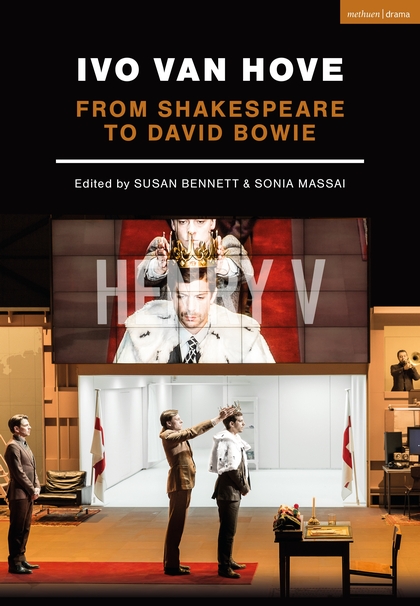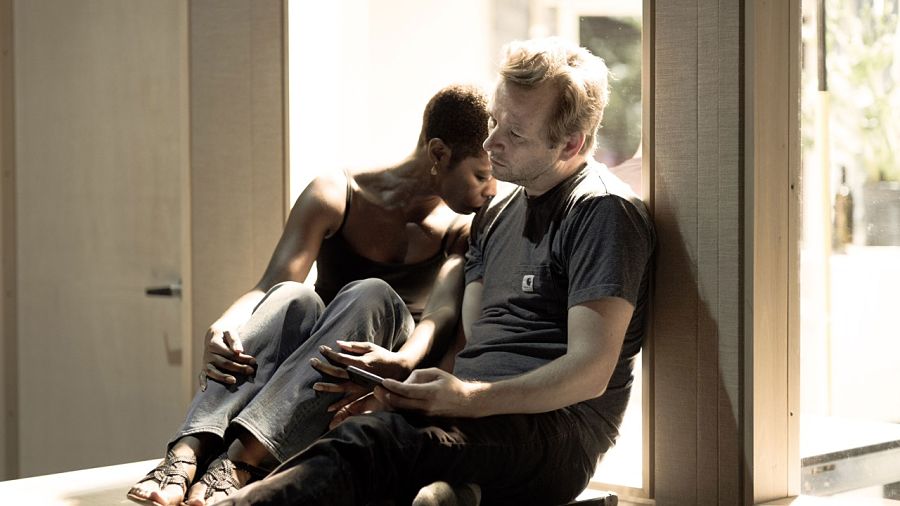The recent announcement that Ivo van Hove will direct a new production of West Side Story, opening on Broadway in February 2020, marked the crossing of a semi-final theatrical frontier by this adventurous artist. This will be his first proper musical, though the subtitle of Ivo van Hove: From Shakespeare to David Bowie suggests how widely he has ranged to create theatre synthesizing realism and stylization to stimulate audiences into seeing classics of every kind with fresh eyes. And that subtitle doesn’t entirely capture the full range on display in this informative new collection assembled by theatre scholars Susan Bennett and Sonia Massai.

Van Hove has adapted novels (The Fountainhead) and films (Scenes from a Marriage, The Damned, Network). He’s done masterpieces of modern drama, from Hedda Gabler to Angels in America, delving extensively into the mid-20th century American repertory. (He won a 1996 Obie for More Stately Mansions and a 2016 Tony for A View from the Bridge). He’s explored politics and power relations in numerous Shakespearean productions, including bold redactions of multiple plays into The Roman Tragedies and Kings of War. He’s directed Greek tragedy (Antigone), French comedy (The Misanthrope), and opera (Brokeback Mountain). The one thing he doesn’t really do is new plays not based on previous material; even Lazarus, with music by David Bowie and text by Irish playwright Enda Walsh, was billed as a “sequel” to Walter Tevis’s 1963 novel, The Man Who Fell to Earth, and the 1976 film based on it.
As director of the Dutch companies Het Zuidelijk Toneel (1990-2000) and Toneelgroep Amsterdam (since 2001), van Hove has trained his focus on reimagining existing work. But as the essays, interviews, and director’s notes in Ivo van Hove make it evident, he needs to be free to mold the material he chooses to his personal vision. This often requires extensive cuts, and although an introductory essay by Massai repeats van Hove’s claim that he has “given total fidelity to every text,” she tempers that by adding, “‘total fidelity’…does not translate into an absolute loyalty to the letter of the text.” Things can get lost this way, notes British dramaturg Kate Bassett, who feels that “Van Hove’s history cycles are less panoramic than the originals.” Bassett’s judicious essay also acknowledges the benefits of this approach, “clarity of line [and] clear overarching structures.”
These are achieved through a lengthy gestation, dissected here in fascinating detail. Van Hove’s notes on Hedda, The Taming of the Shrew, The Misanthrope, Antigone, and Marlowe’s Edward II show how closely he examines a text; it comes as a surprise, given that he usually restages classics in a contemporary setting, to see the extent to which he considers each play’s historical background. The editors’ interview with him elucidates a development process that lasts a minimum of a year. He works with two parallel groups, shaping the text with his dramaturgs while also crafting the “visual dramaturgy” with a team of longtime collaborators headed by video designer Tal Yarden and set and lighting designer Jan Versweyveld.
Versweyveld is the director’s principal partner in life as well as theatre, and the “new realities” he creates with scenery and lights shape a production equally with van Hove’s conception of the text. “Ivo and Jan…arrive on the first day of rehearsals [with] a very clear idea about what they want to do with the show,” comments Halina Reijn, a member of Toneelgroep. Actors are expected to be off book on that first day, and rehearsals seldom last more than three weeks.
“They give you very strict guidelines that have to do with how you physically inhabit space,” says Ruth Wilson, who played Hedda in the van Hove/Versweyveld production at Britain’s National Theatre in 2017. “But their vision and their preparation then give actors freedom.” Wilson is the first of several actors to say that van Hove’s refusal to “psychologize” about a play’s characters liberates them to explore scary, visceral territory in rehearsal and in performance.
Maja Zade, resident dramaturg at Berlin’s Schaubühne theatre, argues convincingly that the combination of visual clarity and raw, emotional acting is a defining quality of van Hove’s work. Van Hove’s ability to embrace technology while maintaining traditional theatre values can be seen in his meticulous deployment of video. “We use it to bring the emotional life of the characters closer to the audience,” he explains to Bennett and Massai, “but not to beautify the production or just to create effects.”
Van Hove’s art is nurtured in collaborations nurtured over decades, Joseph V. Melillo points out in a thoughtful piece titled “Staging Ivo van Hove at BAM.” Writing of the six productions presented during there his tenure as executive director, Melillo discerns an “alchemy of assurance…a confidence that the audience can sense, and which makes them willing to follow these artists anywhere.” He rightly credits this alchemy not just to van Hove and Versweyveld but also to the Toneelgroep ensemble, who are “able to pull of feats of theatrical imagination that simply would not work with a ‘new’ cast.”

As a member of the audience for every van Hove production in New York since 2004, I would add that van Hove gets his best results from actors seasoned in this approach at the Toneelgroep and his longtime American base at New York Theatre Workshop, or from permanent companies such as the Schaubühne and the Comédie-Française. With the internationally assembled casts of Antigone and The Crucible, I found his concepts more schematic and less persuasive.
My caveat is echoed in British academic George Rodosthenous’s assessment of Antigone, though not in Miller scholar Joshua E. Polster’s appreciation of The Crucible. Bennett and Massai’s anthology is appropriately weighted towards positive exegeses of van Hove’s work, although there are some critical comments. A few of them implicitly underscore my sole reservation about this gifted director: a fondness for lucidity at the occasional expense of a richer texture. The comment that resonates most profoundly for me is not precisely critical, but it is pointed. Van Hove’s production of Angels, Tony Kushner muses, “had this feeling of being stripped to its absolute bare bones…Ivo’s production was very much about the frailty and fragility of the human body.” This existential interpretation scanted Kushner’s searching inquiry into the nature of the American experience, and Perestroika’s great epilogue proclaiming his faith in the struggle for a better future was cut altogether. “So feel-good,” van Hove remarked dismissively in Isaac Butler and Dan Kois’s oral history, The World Only Spins Forward, adding in a whisper, “It’s very American.”
All artists’ strengths are inextricably connected to their weaknesses, and if van Hove’s sharpness of focus is occasionally reductive, it’s also what makes his best productions so thrilling. Scenery, lighting, music, sound, video, and actors work seamlessly together in service of a single vision, and if that vision doesn’t encompass everything a play has to offer, it is invariably fresh and stimulating. As Polster observes, “One of the great strengths of theatre…is the ability of plays to take on new meanings then in new hands.” Few theatrical hands are more expert than Ivo van Hove’s.

